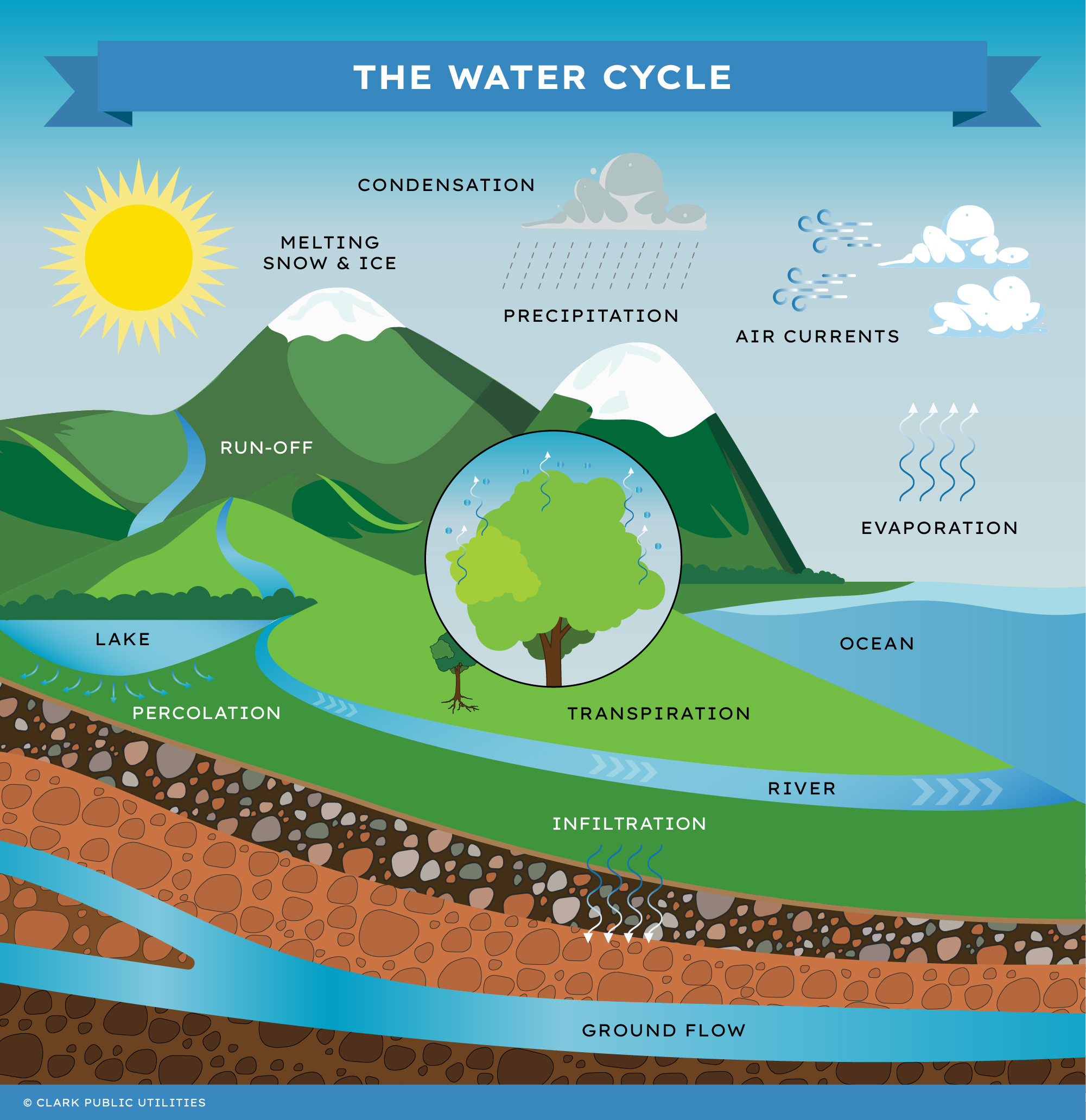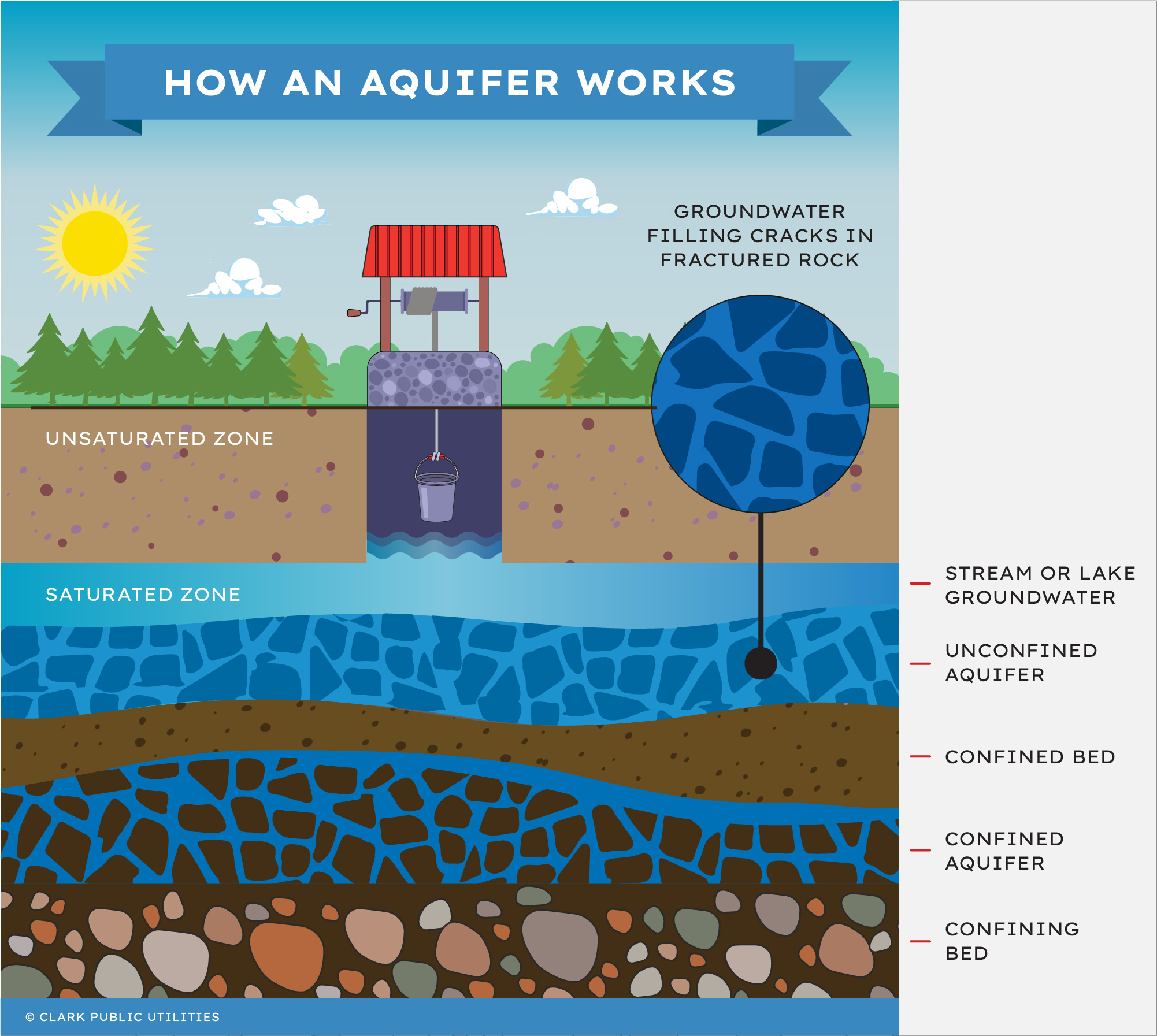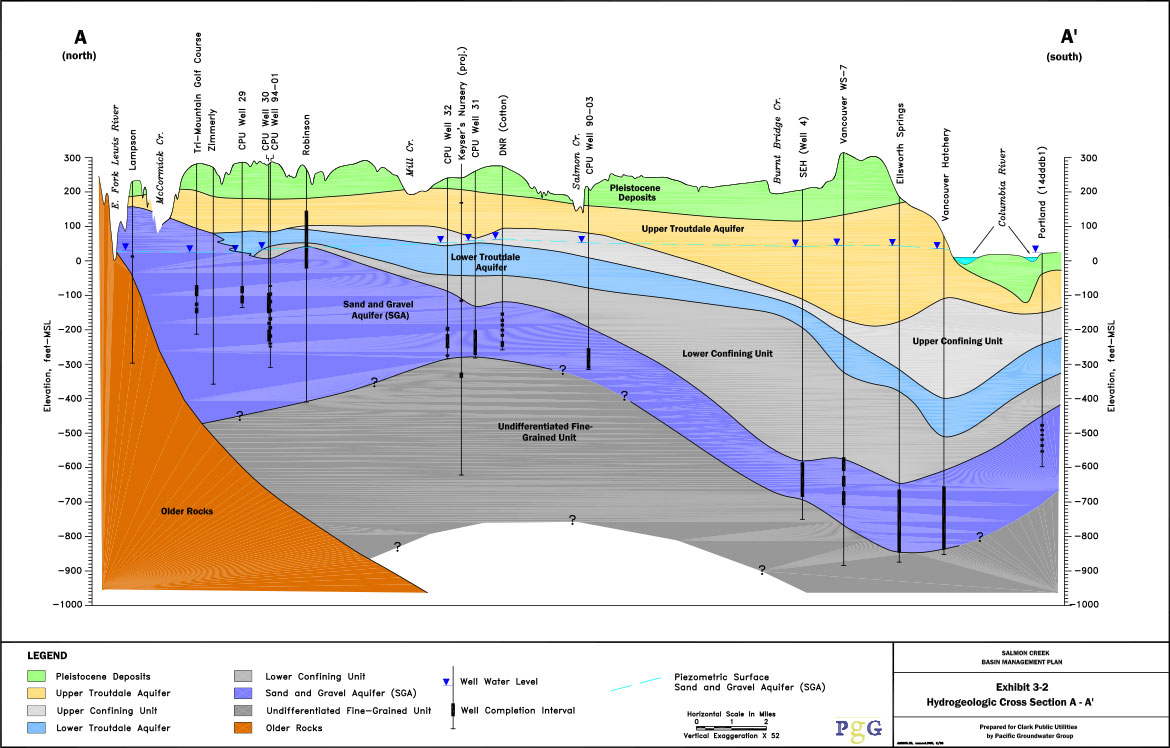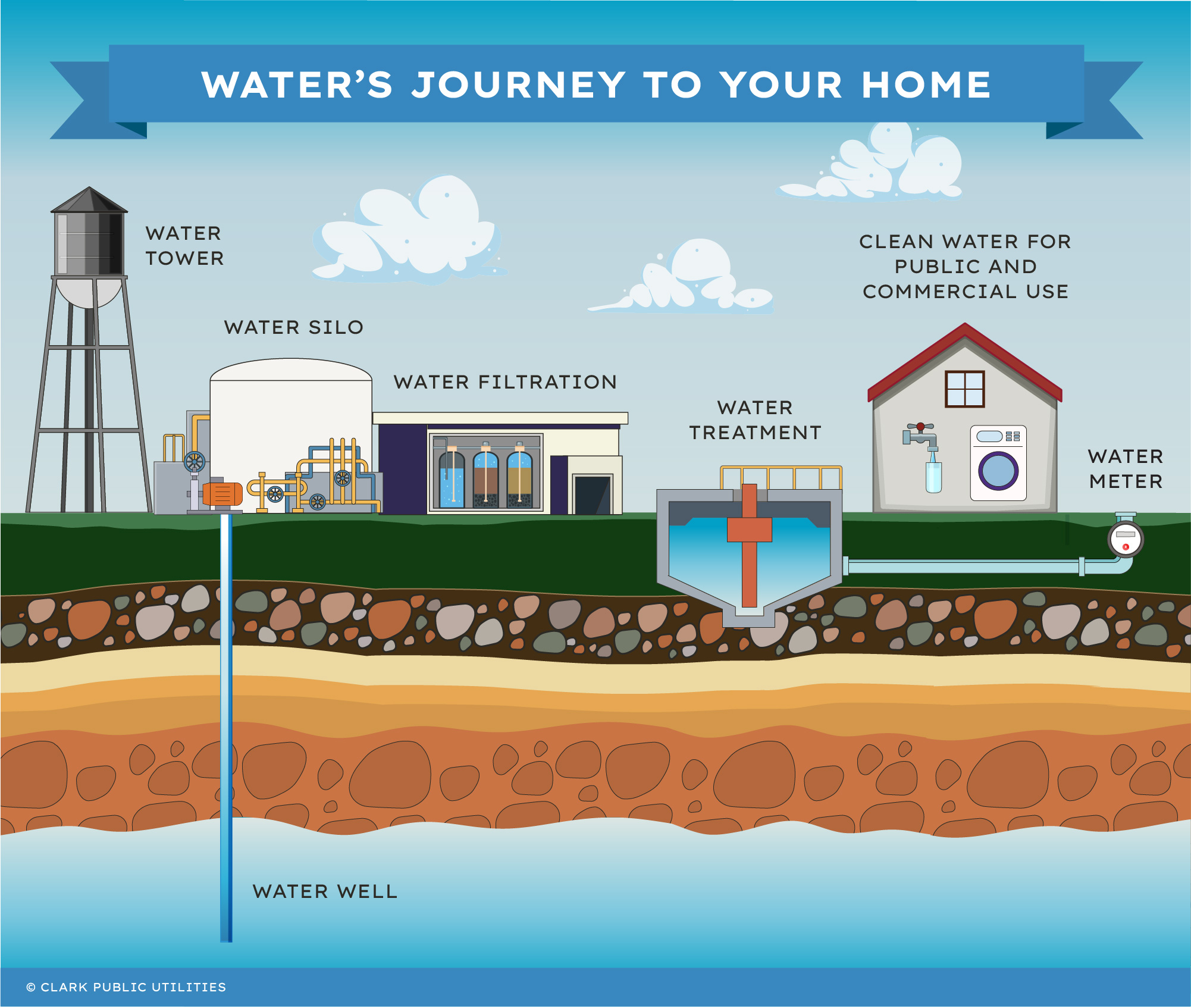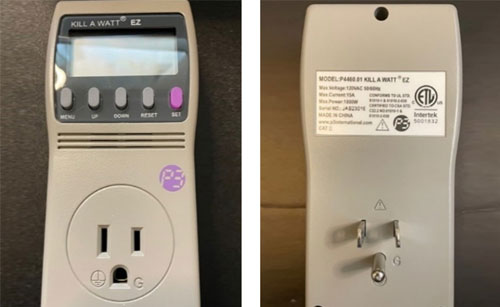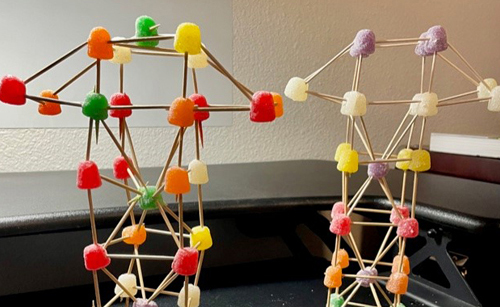We depend on water for so many things — from drinking and cooking to cleaning and doing laundry. Homes, businesses, farms, and manufacturing companies all need water. So where does our water in Clark County come from?
The water cycle is essential to life
Let’s face it … life on Earth can’t exist without water. It’s present in the air, clouds, oceans, and glaciers in one of three phases: solid, liquid, or gas. Water constantly cycles through these phases in a complicated system called the water cycle.
The steps of the water cycle:
A closer look at the water cycle
- Liquid water (from oceans, rivers, and lakes) evaporates into water vapor.
- Water vapor (or gas) rises into the atmosphere and condenses to form clouds.
- Precipitation falls to the earth as rain or snow.
- Some precipitation is intercepted by vegetation and either evaporates or slowly reaches the ground.
- Liquid water flows across and into the ground (infiltration and percolation).
- Water evaporates from bodies of water and transpires from plants.
- Water vapor rises into the atmosphere and the cycle starts again.
Four aquifers provide Clark County with water
- Recent Alluvial Aquifer: A huge groundwater supply is beneath the Columbia River’s floodplain near Vancouver, Camas, and Washougal. It partially recharges from the river’s infiltration.
- Troutdale Aquifer: This 300 square mile aquifer is located beneath much of Clark County (as well as the Portland Metro Area). Its depth ranges from 100 feet to 400 feet and it’s recharged by the Cascades and the Willamette and Columbia Rivers.
- Sand and Gravel Aquifer: This deep aquifer, which lies under much of the greater Vancouver area, contains a significant volume of water. Scientists think the aquifer recharges by infiltration from other aquifers and possibly the Columbia River as well.
- Fractured basalt formations: Aquifers in basalt and other volcanic rock are widespread throughout the Pacific Northwest.
How does water get to your sink?
Before you take your next sip of water from the sink faucet, think about the incredible journey that water took to get to your drinking glass.
- Clark Public Utilities starts by pumping water from the four aquifers we use.
- Pipes bring the water to a Water Distribution Facility.
- Once treated, water travels through a series of pipes to homes in Clark Public Utilities service territory.
Read the story of Whoosh the Water Molecule below

In August 2010, the Carol J. Curtis Well Field was completed. This well, which is designed to be a major water source, has the capacity to meet our water needs even as the population of Clark County grows. It currently adds 7.2 million gallons of water per day to our pumping capacity! The project includes two deep wells, a water treatment facility, and about one mile of 30-inch transmission line to connect the new supply source to the utility’s existing water system.
An extensive project to upgrade our water distribution facilities is currently underway. Some of our water lines are more than 50 years old, so we’re replacing these old and undersized pipes. The funding for much of this work came from Washington’s low-interest Public Works Trust Fund.

Clark Public Utilities’ water doesn’t contain fluoride, which is a naturally occurring mineral that is released from rocks into water. Cities often add fluoride to drinking water, since it’s been found to reduce cavities in children.

 Water Conservation
Water Conservation